Filter by

Evaluation of Drugs Dose Combination for Breast Cancer in MDA-MB-231 Spheroid…
Triple negative breast cancer is a subtypes of breast cancer that are known to have a bad prognosis and spread faster. TNBC tends to have bad prognosis due to the absence of the ER, PR, and HER receptors on the surface of the cells. These absent of receptor cause a limitation for treating them, Additionally, several drugs were proposed as a treatment for TNBC but administration of a single drug…
- Edition
- -
- ISBN/ISSN
- -
- Collation
- -
- Series Title
- -
- Call Number
- BM 23-032

Filtering ECG Signal to Optimize the R Peak Detection Using Scipy Library wit…
In 2019, approximately 17.9 million people died because of cardiovascular disease (CVD). In the clinical immersion conducted at Lira Medika, Heart Failure (HF) is a dangerous disease that needs proper health monitoring. The common technology used to monitor heart disease is the electrocardiogram (ECG). But the concerns of electrocardiogram (ECG) raw data are hardly examined by medical experts d…
- Edition
- -
- ISBN/ISSN
- -
- Collation
- -
- Series Title
- -
- Call Number
- BT 23-008

R Peak-based Algorithm for Bradycardia and Tachycardia Detection
Heart disease or cardiovascular disease is the deadliest disease in the world which claims about 17.9 million lives globally every year. Patients who suffer from cardiovascular disease are usually more severe than the patients who don’t know how to manage their lifestyle. Hence, it needs to improve the people’s lifestyle by providing smart reminders or self -diagnosis actions using the wear…
- Edition
- -
- ISBN/ISSN
- -
- Collation
- -
- Series Title
- -
- Call Number
- EP BI003
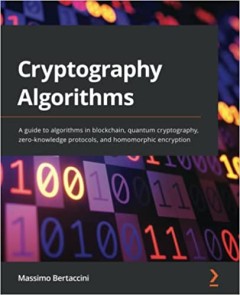
Cryptography algorithms: a guide to algorithms in blockchain, quantum cryptog…
- Edition
- -
- ISBN/ISSN
- 9781789617139
- Collation
- xvi,340 p. : ill. : ind. ; 24 cm.
- Series Title
- -
- Call Number
- 005.73 Ber c
- Edition
- -
- ISBN/ISSN
- 9781789617139
- Collation
- xvi,340 p. : ill. : ind. ; 24 cm.
- Series Title
- -
- Call Number
- 005.73 Ber c

Algorithms for computational biology : 6th International Conference, AICoB 20…
- Edition
- LNBI 11488
- ISBN/ISSN
- 9783030181734
- Collation
- xiii, 223 p. : ill. : ind. ; 24 cm.
- Series Title
- -
- Call Number
- 572.33 Alg
- Edition
- LNBI 11488
- ISBN/ISSN
- 9783030181734
- Collation
- xiii, 223 p. : ill. : ind. ; 24 cm.
- Series Title
- -
- Call Number
- 572.33 Alg

Algorithms for computational biology : 5th International Conference, AICoB 20…
- Edition
- LNBI 10849
- ISBN/ISSN
- 9783319919379
- Collation
- x, 153 p. : ill. : ind. ; 24 cm.
- Series Title
- -
- Call Number
- 572.33 Alg
- Edition
- LNBI 10849
- ISBN/ISSN
- 9783319919379
- Collation
- x, 153 p. : ill. : ind. ; 24 cm.
- Series Title
- -
- Call Number
- 572.33 Alg
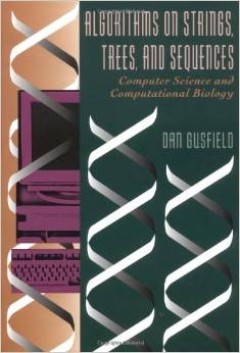
Algorithms on strings, trees, and sequences : computer science and computatio…
Traditionally an area of study in computer science, string algorithms have, in recent years, become an increasingly important part of biology, particularly genetics. This volume is a comprehensive look at computer algorithms for string processing. In addition to pure computer science, Gusfield adds extensive discussions on biological problems that are cast as string problems and on methods deve…
- Edition
- -
- ISBN/ISSN
- 9780521585194
- Collation
- xviii, 534 p. : ill. : ind. ; 26 cm.
- Series Title
- -
- Call Number
- 005.73 Gus a
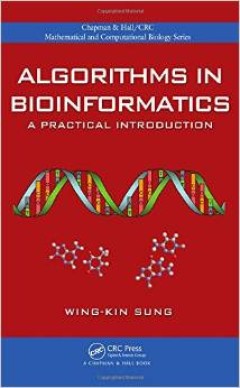
Algorithms in bioinformatics : a practical introduction
Developed from the author’s own teaching material, Algorithms in Bioinformatics: A Practical Introduction provides an in-depth introduction to the algorithmic techniques applied in bioinformatics. For each topic, the author clearly details the biological motivation and precisely defines the corresponding computational problems. He also includes detailed examples to illustrate each algorithm a…
- Edition
- -
- ISBN/ISSN
- 9781420070330
- Collation
- xvii, 381 p. : ill. : ind. ; 24 cm.
- Series Title
- -
- Call Number
- 572.80285 Sun a
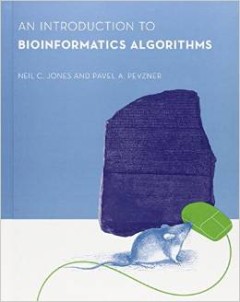
An introduction to bioinformatics algorithms
This introductory text offers a clear exposition of the algorithmic principles driving advances in bioinformatics. Accessible to students in both biology and computer science, it strikes a unique balance between rigorous mathematics and practical techniques, emphasizing the ideas underlying algorithms rather than offering a collection of apparently unrelated problems.The book introduces biologi…
- Edition
- -
- ISBN/ISSN
- 9780262101066
- Collation
- xviii, 435 p. : ill. : ind. ; 24 cm.
- Series Title
- -
- Call Number
- 572.80285 Jon i
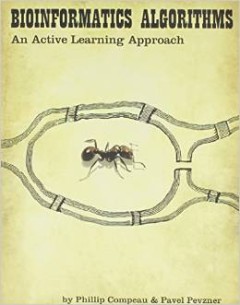
Bioinformatics algorithms : an active learning approach
Bioinformatics Algorithms: An Active Learning Approach is one of the first textbooks to emerge from the recent Massive Online Open Course (MOOC) revolution. A light-hearted and analogy-filled companion to the authors' acclaimed online course (http://coursera.org/course/bioinformatics), this book presents students with a dynamic approach to learning bioinformatics. It strikes a unique balance be…
- Edition
- -
- ISBN/ISSN
- 9780990374602
- Collation
- xxii, 362 p. : ill. ; 23 cm.
- Series Title
- -
- Call Number
- 572.80285 Com b

Bioinformatics algorithms : techniques and applications
Presents algorithmic techniques for solving problems in bioinformatics, including applications that shed new light on molecular biology This book introduces algorithmic techniques in bioinformatics, emphasizing their application to solving novel problems in post-genomic molecular biology. Beginning with a thought-provoking discussion on the role of algorithms in twenty-first-century bioinformat…
- Edition
- -
- ISBN/ISSN
- 9780470097731
- Collation
- xiv, 500 p. : ill. : ind. ; 25 cm.
- Series Title
- -
- Call Number
- 572.80285 Bio
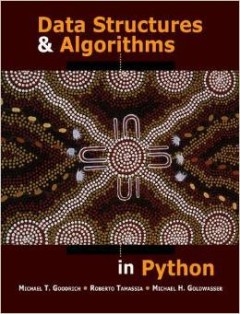
Data structures and algorithms in phyton
Based on the authors' market leading data structures books in Java and C++, this book offers a comprehensive, definitive introduction to data structures in Python by authoritative authors. Data Structures and Algorithms in Python is the first authoritative object-oriented book available for Python data structures. Designed to provide a comprehensive introduction to data structures and algorithm…
- Edition
- -
- ISBN/ISSN
- 9781118290279
- Collation
- xix, 748 p. : ill. : ind. ; 24 cm.
- Series Title
- -
- Call Number
- 005.133 Goo d
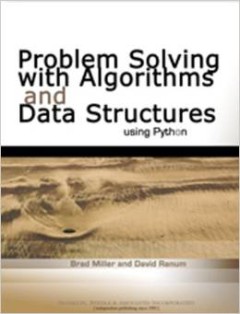
Problem solving with algorithms and data structures using phyton
- Edition
- -
- ISBN/ISSN
- 9781590280539
- Collation
- xi, 357 p. : ill. : ind. ; 24 cm.
- Series Title
- -
- Call Number
- 005.133 Mil p
- Edition
- -
- ISBN/ISSN
- 9781590280539
- Collation
- xi, 357 p. : ill. : ind. ; 24 cm.
- Series Title
- -
- Call Number
- 005.133 Mil p
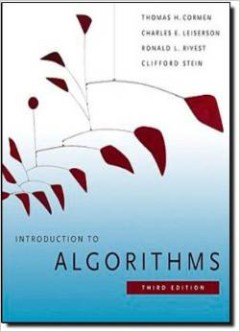
Introduction to algorithms
Some books on algorithms are rigorous but incomplete; others cover masses of material but lack rigor. Introduction to Algorithms uniquely combines rigor and comprehensiveness. The book covers a broad range of algorithms in depth, yet makes their design and analysis accessible to all levels of readers. Each chapter is relatively self-contained and can be used as a unit of study. The algorithms a…
- Edition
- 3rd edition
- ISBN/ISSN
- 9780262033848
- Collation
- xix, 1292 p. : ill. : ind. ; 20.7 x 24 cm.
- Series Title
- -
- Call Number
- 005.1 Cor i
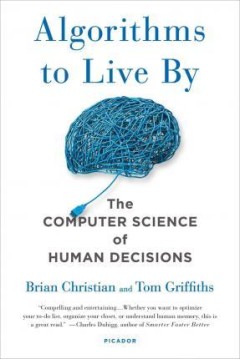
Algorithms to live by : the computer science of human decisions
- Edition
- -
- ISBN/ISSN
- 9781250118363
- Collation
- 351 p, 15 x 23 cm
- Series Title
- -
- Call Number
- 153.43 Chr a
- Edition
- -
- ISBN/ISSN
- 9781250118363
- Collation
- 351 p, 15 x 23 cm
- Series Title
- -
- Call Number
- 153.43 Chr a
 Computer Science, Information & General Works
Computer Science, Information & General Works  Philosophy & Psychology
Philosophy & Psychology  Religion
Religion  Social Sciences
Social Sciences  Language
Language  Pure Science
Pure Science  Applied Sciences
Applied Sciences  Art & Recreation
Art & Recreation  Literature
Literature  History & Geography
History & Geography